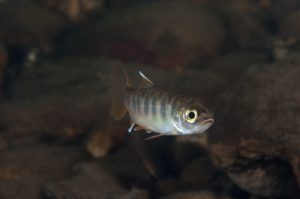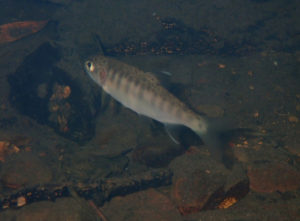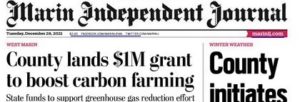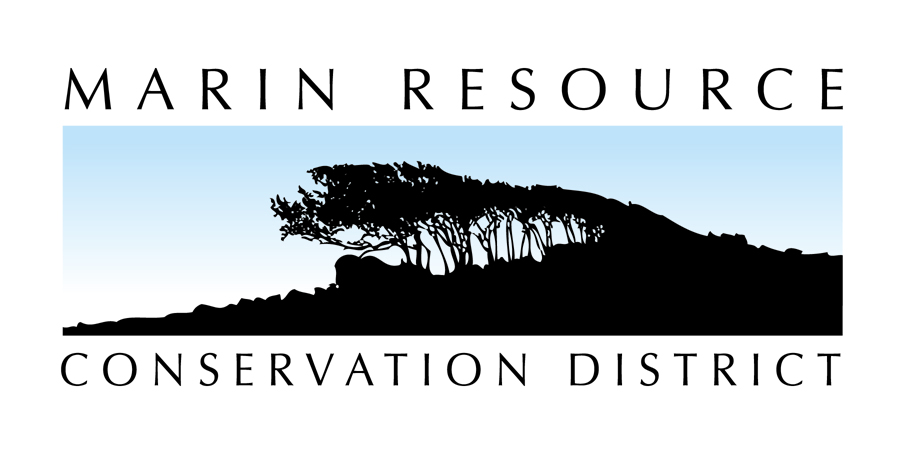News from Urban Streams Coordination Program (MRCD)
Board Approves Policies in San Geronimo Valley
Development and environmental ordinances updated for Stream Conservation Area
San Rafael, CA – Rules about property development and environmental conservation within one rural Marin County area soon will have updated ordinances to serve as a model.
There are 1,485 households in the San Geronimo Valley that will be affected by two ordinances approved July 19 by the Marin County Board of Supervisors. One ordinance amends the Marin County Code for the updated Stream Conservation Area (SCA) ordinance that has been years in the making, and the other rezones all lots within the valley to a new combining district. The SCA ordinance objective is to protect streams as an essential environmental resource.
Elements of the new rules factor in the results of legal settlement between the County and the Salmon Protection and Watershed Network (SPAWN), a leading advocate for the protection of marine wildlife based in Olema. The settlement was announced in May. Both ordinances become effective August 18.
The San Geronimo Valley, comprised of four unincorporated villages, is surrounded by wooded open space areas just west of densely populated parts of central and eastern Marin. Lagunitas Creek in the San Geronimo Watershed supports one of the largest populations of wild federally listed endangered coho salmon, steelhead trout, and chinook salmon in Northern California. Coho were once plentiful in the natural waters that drain into Tomales Bay and the Pacific Ocean, but recent spawning counts were well below the federal recovery target needed to bring the salmon out of its endangered status.
As per the settlement with SPAWN, the SCA ordinance creates a new minimum 35-foot “no touch zone” along all streams, limits residential additions to a footprint of 300 square feet, and clarifies exemptions that allow removal of some vegetation. The final ordinances create standards for development within the buffer and provide consistent permit review procedures and requirements. The language details are summarized in the staff report from July 19; more documentation is on the meeting agenda.
On June 13, the Marin County Planning Commission unanimously recommended the ordinances to the Supervisors, noting that the moves recommended by the Marin County Community Development Agency (CDA) would assure development in San Geronimo Valley is consistent with the 2007 Countywide Plan and environmental impact reports while factoring in feedback from affected residents. Latest revisions center on vegetation removal rules, planning fees, and a voluntary point-of-sale inspection program. CDA staff released an initial draft of the ordinance in September 2021 and collected feedback before making revisions.
The ordinance includes various supporting resource materials to provide guidance to homeowners and contractors. It expands the existing site plan review provisions to encompass development activities proposed within SCAs in the San Geronimo Valley. The ordinances cover rules about the removal of fire-prone trees, including language that clarifies allowances for building additions, and a requirement for staff to provide public biannual reports to the Supervisors that include facts and figures about building applications within the SCA.All the SCA work is part of the ongoing staff update of the 2007 Countywide Plan, a long-range, comprehensive, land use blueprint for the unincorporated areas of the county. CDA staff is leading the County’s effort to study, educate, and protect stream and streamside conditions.
More information is available at MarinCounty.org/SCA. Comments or questions about the ordinances may be submitted by email to CDA Senior Planner Kristin Drumm. See here for official press release page.
For more information on Marin RCD’s Urban Streams program:
Sarah Phillips, Urban Stream Program Manager, Marin RCD – (415) 663-1170, ext. 302, sarah@marinrcd.org
Fisheries News
Marin Water, Update on Salmonid Surveys (Eric Ettlinger)
05/2022
County Reaches Legal Settlement with Nonprofit: Environmental group SPAWN challenged language in Countywide Plan
“County of Marin has agreed in principle to a settlement with a Marin County-based environmental nonprofit that challenged the County’s analysis of the environmental effects of the 2007 Marin Countywide Plan on endangered fish species in the San Geronimo Valley.”
Marin County Poised to Adopt Overdue Stream Conservation Ordinance, STRAW
Sanford Nax, California Proposes Requiring Tiremakers to Consider Safer Alternative to Chemical that Kills Coho Salmon, Department of Toxic Substances Control
08/2021
Robin Meadows, Coexisting with Coho During Drought, Bay Area Monitor. Oakland, CA.
“Conservation can decrease pressure on agencies to keep water in reservoirs, freeing up more for environmental flows, Every little bit helps. Collectively, our actions will determine whether the Bay Area’s coho disappear or return in abundance to our coastal creeks.” – Sarah Phillips, MRCD Urban Streams Program Manager

Will Houston, Marin creek gets rare visit from endangered salmon, Mercury News. San Jose, CA.
“For more than a decade, biologists dutifully returned each winter in search of endangered coho salmon at a once-thriving stronghold flowing through Point Reyes National Seashore — only to come up empty-handed. That changed this year.”

09/2017
Ariel Rubissow Okamoto, Snorkel Surveys Reveal the Fish World of Mount Tam’s Creeks, Bay Nature
07/2017
Steve Milne, Feds OK New Mercury Protections In California Waters, capradio
05/2017
Zen Menahem, Ocean Acidification Makes Salmons Lose Ability To Sense Predators, According To Researchers From The University Of Washington, The Science Times
Effects of Ocean Acidification on Salmon and Sablefish Neurobehavioral Function – Evan Gallagher
Mark Prado, Kent Lake water flow study to look at fish impact, Marin Independent Journal
Barry Eberling, Follwing a wet winter, Napa River fish trap yields high salmon count, Napa Valley Register
Monica Heger, Dams Be Damned: California Rebuilds the Salmon Habitat It Destroyed, yes! Magazine
04/2017
Wendy Culverwell, Learning to love the (Pacific) lamprey, Tri-City Herald
01/2017
Kristin Hanes, California’s recent storms are devastating endangered salmon, SF Gate
The following is an update from Eric Ettlinger, Aquatic Ecologist with Marin Water on January 13, 2017: “The current state of affairs in Lagunitas Creek can be described as a glass-half-full/glass-half-empty situation. Or more accurately, a reservoir-full, streambed-empty situation. By the end of December the coho salmon run was on track to be larger than the parent generation of three years ago and continue the generational improvements we’ve seen for each of the last five years. But then came the unrelenting storms of the last two weeks. On the positive side those storms filled MMWD’s reservoirs and produced the high flows that can create and improve salmon habitats in Lagunitas Creek. On the negative side those flows destroyed many coho redds, washed away some of our salmon habitat structures, and severely hampered our survey work. We’ve heard rumors of fresh coho out there (and steelhead should be starting to spawn too), but we haven’t been able to see them ourselves. The most recent storm raised Lagunitas Creek flows to 4,300 cubic feet per second, which was the third-highest flow in 35 years. In the coming months we’ll see if this flood had significant impacts on incubating salmon eggs and/or last year’s fry. Previous major floods in 1998 and 2006 resulted in very poor egg survival, and we expect to see relatively few fry again this summer. One-year-old juvenile coho have survived recent large floods successfully, likely by seeking out slow water areas on floodplains. Ironically, it may be moderate storm events that are most deadly, because flows stay confined in the stream channel and slow water habitats may be hard to find. This summer we’ll be enhancing a number of areas on Lagunitas Creek to provide exactly those kinds of slow water habitats. On an optimistic note, the floods this season have risen and receded rapidly, hopefully subjecting coho fry to fast, confined flows only briefly. In late March we’ll start counting the surviving smolts as they migrate to the ocean and, one way or the other, that data will contribute to our understanding of how salmon survive floods and what we can do to help.”
Mark Prado, Expected Friday rains will boost Marin’s coho, Marin Indepedent Journal
Charlotte Ambrose, Species in the Spotlight: Central California Coast Coho Salmon (Oncorhynchus kisutch), NOAA Fisheries
02/2016
Sandi Doughton, Toxic road runoff kills adult coho salmon in hours, study finds, The Seattle Times
10/2015
Peter Moyle, An update on California fishes of ‘special concern’, UC Davic Center for Watershed Sciences
California Fish Species of Special Concern, 3rd Edition (2015) published
Tomales Roach (Lavinia symmetricus ssp.) has recently changed its status to a Species of Moderate Concern
Mark Prado, Chinook salmon return to Marin, coho shouldn’t be too far behind, Marin Independent Journal
2014/02/08
Watts, J. 2014. Marin Voice: ‘Carbon farming’ and Marin’s drought. Marin Independent Journal. San Rafael, CA.
MALT Executive Director, Jamison Watts, wrote that practices implemented through the Marin Carbon Project, specifically compost application on rangeland, can help ranchers manage for drought by increasing soil water holding capacity. Marin RCD is one of the many partners working on the Marin Carbon Project.
John Whitfield, Fish fertilize trees: Wild salmon and trees have a mutually beneficial relationship, nature
Other Urban Streams News
06/2022
Ayla Burnett, Locals call for change in PG&E tree removal, Point Reyes Light
05/2022
As part of his presentation of the May Revision of the Fiscal Year 2022-23 state budget, Governor Gavin Newsom proposed a new Beaver Restoration program to be run by the California Department of Fish and Wildlife.
03/16/2022
Marin RCD, Request for Proposal, Project Manager for Marin Biomass Project
01/01/2022
Jeffery Schaub, Marin County will implement carbon farming, KCBS
12/2021
Will Houston, Marin lands $1M state grant for carbon farming projects, Marin Independant Journal. San Rafael, CA.

08/2021
Robin Meadows, Coexisting with Coho During Drought, Bay Area Monitor. Oakland, CA.
“When Bolinas farmer Peter Martinelli decided to help coho salmon by boosting summer water levels in Pine Gulch Creek, which runs through his land, he had no idea that the project would take two decades to complete. Now he’s happy he saw it through. Coho are endangered in most of their California range, and droughts like the one we’re experiencing now are among the biggest threats to these coastal salmon.”
“My grandpa used to say that salmon in the creeks were so thick, you could walk across the top of them,” – Jody Brazil (speaking of Walker Creek)
“Conservation can decrease pressure on agencies to keep water in reservoirs, freeing up more for environmental flows, Every little bit helps. Collectively, our actions will determine whether the Bay Area’s coho disappear or return in abundance to our coastal creeks.” – Sarah Phillips, MRCD Urban Streams Program Manager

Will Houston, Marin creek gets rare visit from endangered salmon, Mercury News. San Jose, CA.
“For more than a decade, biologists dutifully returned each winter in search of endangered coho salmon at a once-thriving stronghold flowing through Point Reyes National Seashore — only to come up empty-handed. That changed this year.”
Although nesting sites were not found at Pine Gulch Creek, one nesting site was found in Pine Gulch Creek, which follows Highway 1 and flows into Bolinas Lagoon. A potential reason why:
“For [National Park Service biologist Michael]Reichmuth the most likely explanation for why a salmon nest was found in Pine Gulch Creek after more than a decade is that some coho were unable to access Redwood Creek because of the drought conditions this winter. A sand berm at the mouth of Redwood Creek at Muir Beach can prevent fish from entering if winter rainfall isn’t enough to generate flows that can break through it…Pine Gulch Creek typically has more water than Redwood Creek, in part because of a program enacted by the Marin Resource Conservation District in 2016. Under the program, three Bolinas farms agreed to forgo their summer water diversions from the creek and instead were given permission to store water in four ponds during the more flush winter months. The intention was to provide fish, especially young rearing coho, more water during the summer months when flows can drop to dangerously low levels in dry years.”

10/2017
Richard Halstead, Marin supervisors tee up for purchase of San Geronimo Golf Course, Marin Independent Journal
Nona Dennis, Many creeks run through it, Marin Conservation League
08/2017
Mark Prado, West Marin creek project aims to help endangered fish, Marin Independent Journal
James Herrera, Carmel River Lagoon project to enhance steelhead trout habitat with debris drop, Monterey Herald
Sarah Phillips: Marin RCD Urban Streams Program Manager, Report to Marin County BOS regarding USC Program to date (22 months), start at 1 hr 48 min mark
12/2015
Beau Evans, Creek restorations sequester tons of bad gas, study finds, Point Reyes Light
10/2015
Mark Prado, Trout Unlimited fish protection work comes at perfect time, Marin Indepedent Journal
Stephanie Weldy, Bio-filtering islands launched into Civic Center Lagoon at Bioneers Conference, Marin Indepedent Journal
06/2015
Sarah Phillips: Marin RCD Urban Streams Program Manager, Report to Marin County BOS regarding USC Program to date (9 months), start at 2 hr 10 min mark
10/2014
Megen Hansen, Movers & Shakers: Marin Conservation District hires urban streams coordinator, Marin Independent Journal
RCD launches new program, Point Reyes Light
Shelly Ingram, Ranching in jeopardy says former National Park Service superintendent, West Marin Citizen
George Clyde, Marin RCD Launches New Program to Improve Local Creeks, MRCD Press Release
2014/02/08
Watts, J. 2014. Marin Voice: ‘Carbon farming’ and Marin’s drought. Marin Independent Journal. San Rafael, CA.
MALT Executive Director, Jamison Watts, wrote that practices implemented through the Marin Carbon Project, specifically compost application on rangeland, can help ranchers manage for drought by increasing soil water holding capacity. Marin RCD is one of the many partners working on the Marin Carbon Project.
